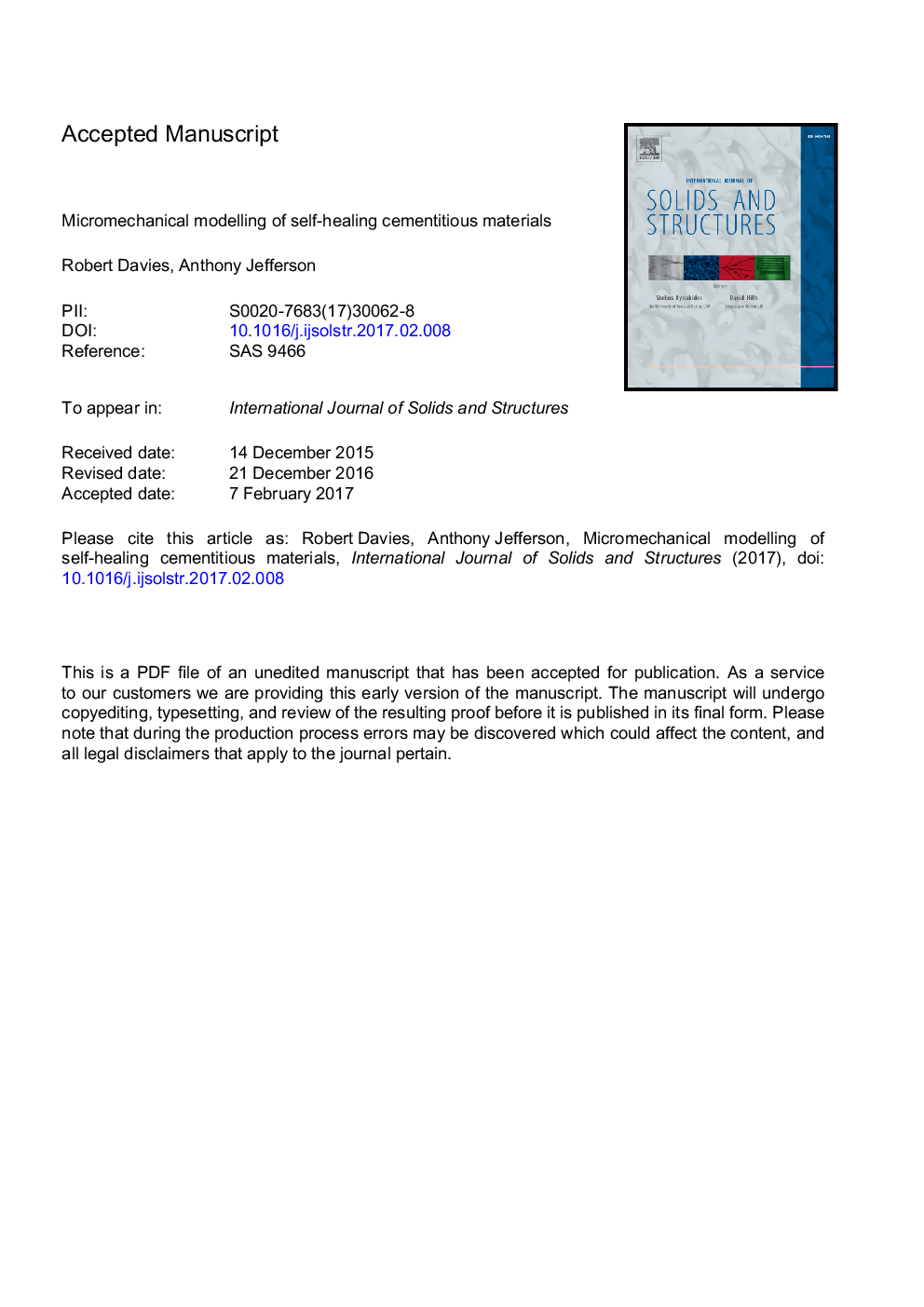| Article ID | Journal | Published Year | Pages | File Type |
|---|---|---|---|---|
| 4922479 | International Journal of Solids and Structures | 2017 | 31 Pages |
Abstract
A new approach is described for simulating self-healing behaviour in cementitious materials with a two phase micro-mechanical constitutive model. A Mori-Tanaka homogenisation scheme is employed for the composite along with an exterior point Eshelby solution that accounts for stress concentrations adjacent to inclusions. In addition, anisotropic micro-cracking is simulated using arrays of circular cracks. Self-healing is incorporated into the model by using a novel solidification formulation that models healing under both null and non-zero strain conditions. The focus of the present work is on the recovery of mechanical properties of the micro-cracked material. The performance of the 3D micromechanical self-healing model is illustrated using a series of stress-strain paths that involve damage and healing cycles. The implementation of the model in a layered beam model is also described, as are a series of model validations that employed data from a recent test series undertaken at Cardiff University as well as data from tests undertaken by others. The examples and validations show that the new micro-mechanical self-healing model is capable of representing the characteristic mechanical response of self-healing cementitious materials.
Related Topics
Physical Sciences and Engineering
Engineering
Civil and Structural Engineering
Authors
Robert Davies, Anthony Jefferson,
